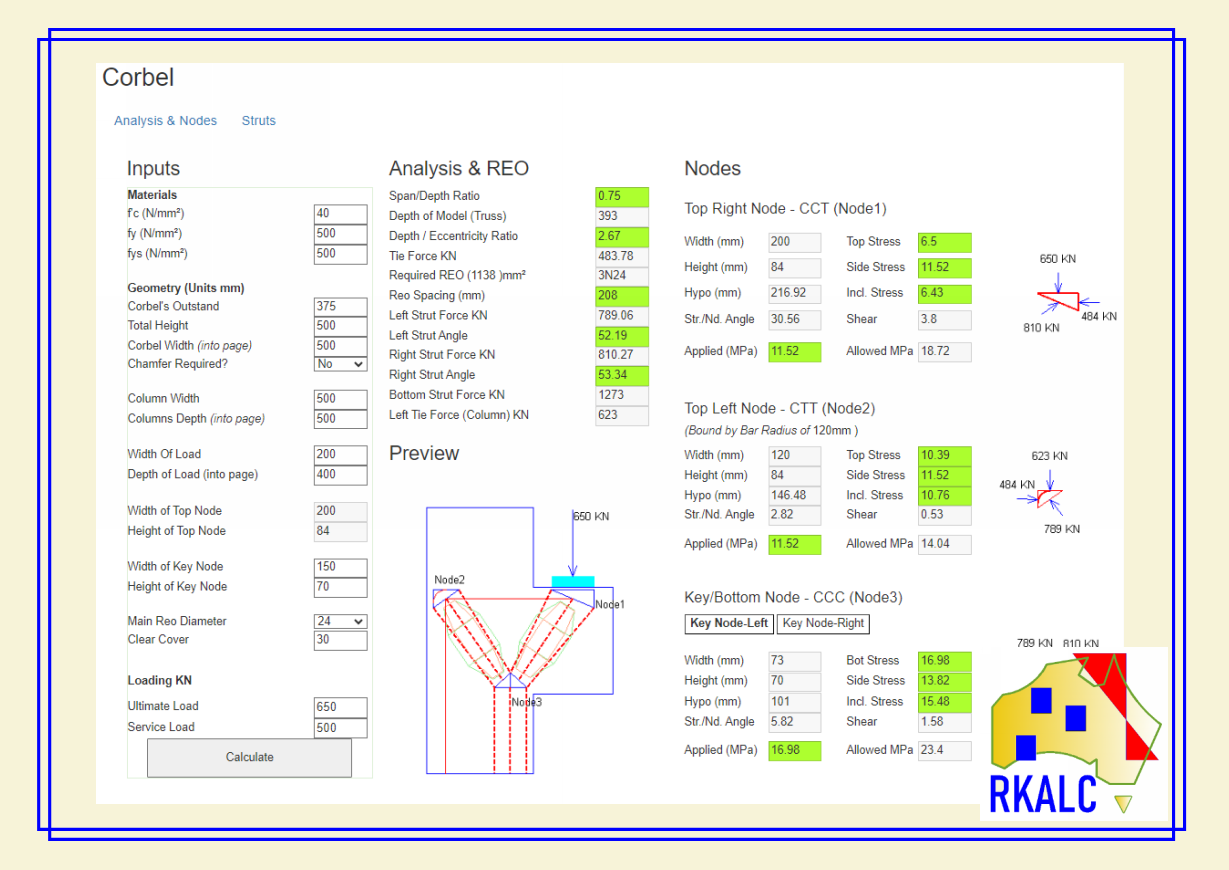STM Calculator
This is an absolutely amazing application, will help you rapidly design transfer beams / walls that are deep,
using the strut-and-tie method and AS3600-2018 code limits. You can see how it generates state-of-art output in no time,
and gets you to the bottom of the matter.
Our AI-Powered RKALC Assistant is here to help!
Open STM Calculator! »
STATE OF ART Engineering Apps!
Have you had a chance to explore our STM Calculator? (strut-and-tie method) Within its virtual walls, you'll discover a treasure trove
of our most sought-after apps, each a shining star in its own right. These exclusive gems aren't just unique in the whole web – they're
here to serve up engineering analyses and designs in a way that's nothing short of cutting-edge.
So, what are you waiting for? Embark on a journey through our suite of apps. It's more than just grim and boring calculations –
it's about transforming your engineering experience to the KALC way where again, you put face to the KALC.
STM Wall
This can be an ideal design tool for shear walls that are landing on two columns, by widening the top
load and assuming the depth of D-region anywhere between 70% to 100% of the span. The concentrated reo at
bottom of wall should be at 0.2 to 0.3 of the D-region's depth.
Every Node Matters!
In this tab of the application, you can see every node stress state, be it normal to the surface or with a bit on angle.
Strut Capacity? No Problem!
See how good it checks every element with great detail. There is no match for this app so grab it and let me know if any help is needed
In all cases, you need to get your head around the STM metohd in the Australian Standard.

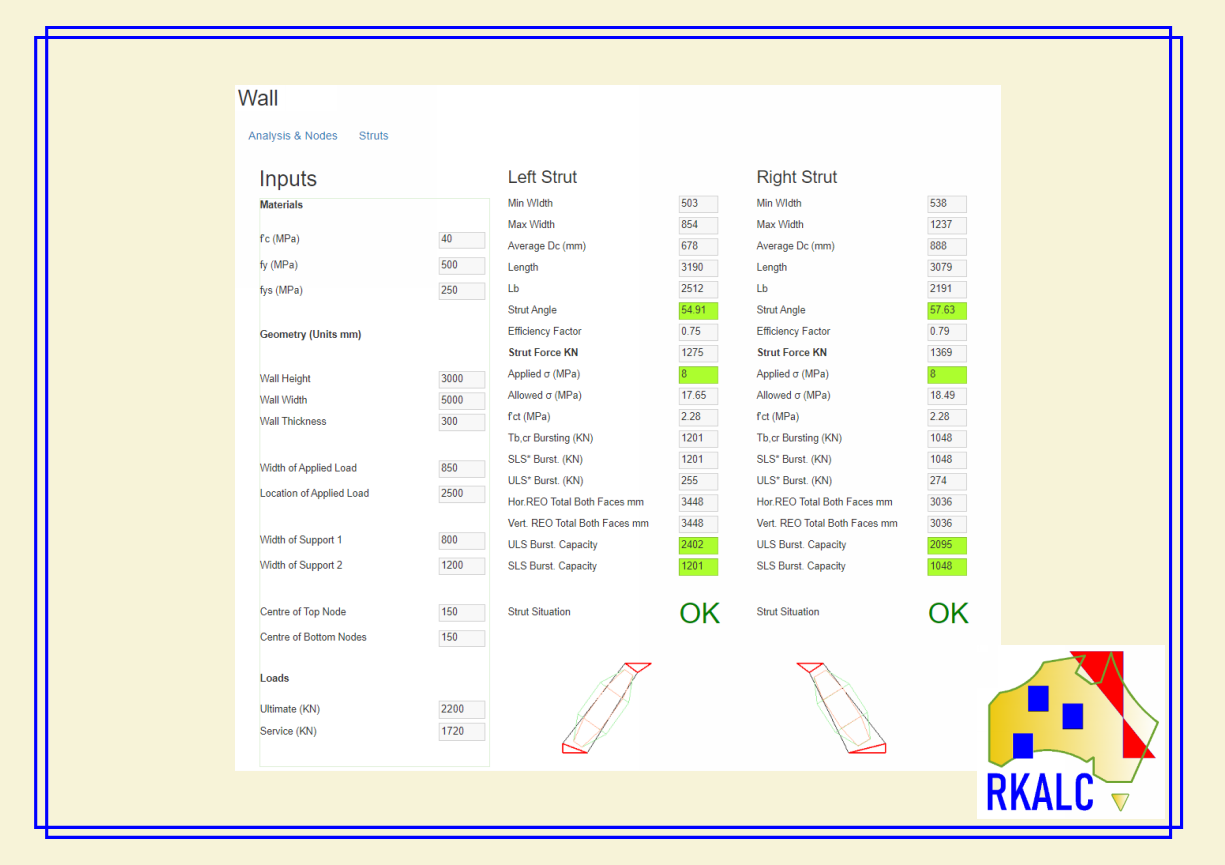
Coupling Beam
Tall building Engineers : Meet the Coupling Beam Webapp – A First-of-Its-Kind Tool for Structural Engineers
This webapp is based on the influential SOM 2008 paper, with its core design principles adapted from ACI to align with our Australian Standards – especially the requirement to use strut-and-tie modelling for beams with aspect ratios under 3–4.
This app:
- Ensures proper compliance with AS codes
- Produces clear, structured, and “well-cooked” calculation reports
- Mohr Circles for all nodes
- Eliminates manual iterations with the help of our AI assistant – not doing the calcs for you, but running the
app intelligently based on your natural language instructions
- Fully web-based – nothing to install, access it anywhere
As with many other tools in RKALC, this app reflects our belief that the future of structural design lies in smarter,
accessible, standards-aligned automation – and it's already here.
Try it now. See what the future feels like.
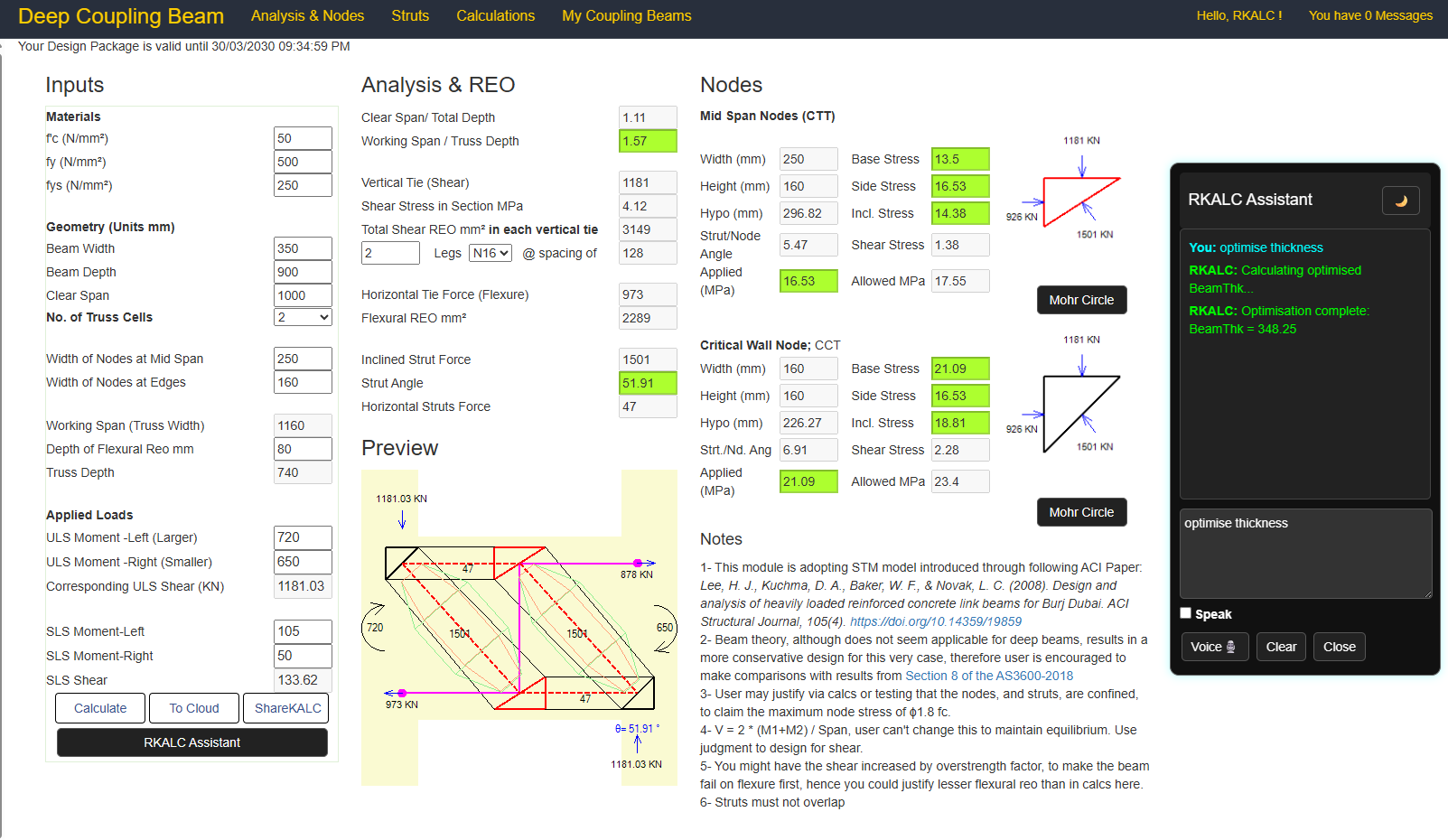
RKALC Diamond
It is a very common case for columns to "rotate" from one level to another (thanks to architects).
Well, the bearing tool here is made to resolve it.
This is a state-of-art application will give you peace and speed.
I am not aware of similar apps and you can say this is the first time you see such a beautiful thing since very long time. go for it and try / verify as much as you wish.
The rotating columns with drop panel, have been addressed using two methods complementing each other in some way. First is STM analogy, a 3 dimensional one.
Note the reinforcement should be provided as close as possible to the columns (under or over)
The joint capacity is based on item 10.8 of the code
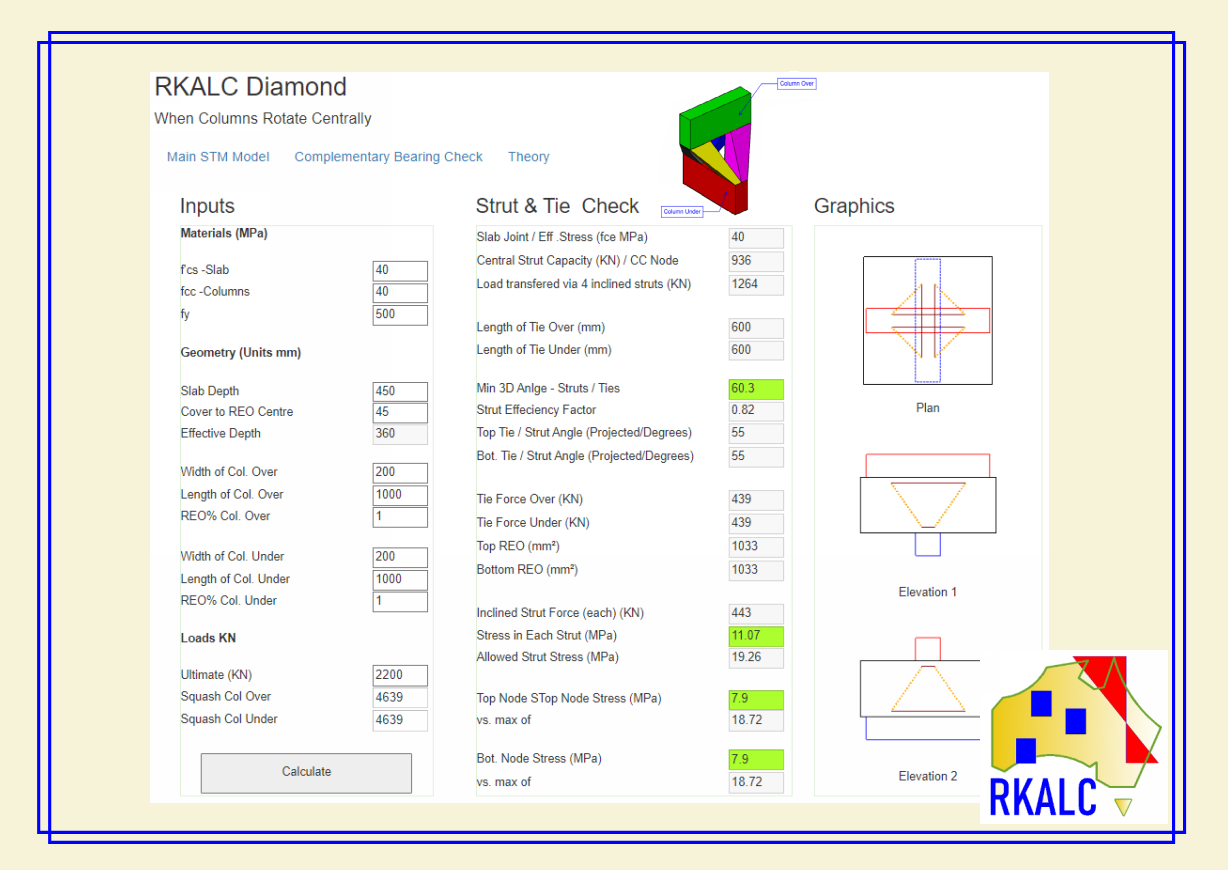
Bearing check, based on interpretation of section 12 of the code is here used.
Basically A1 is the smaller area, and A2 is the bigger one. The ration of both gives enhancement factor to count on when you compare the pressure applied on A1
It is always recommended to start with a drop panel of 50% of column's long dimension (unless your loading is too small, or column is too long etc).

Theory explained.
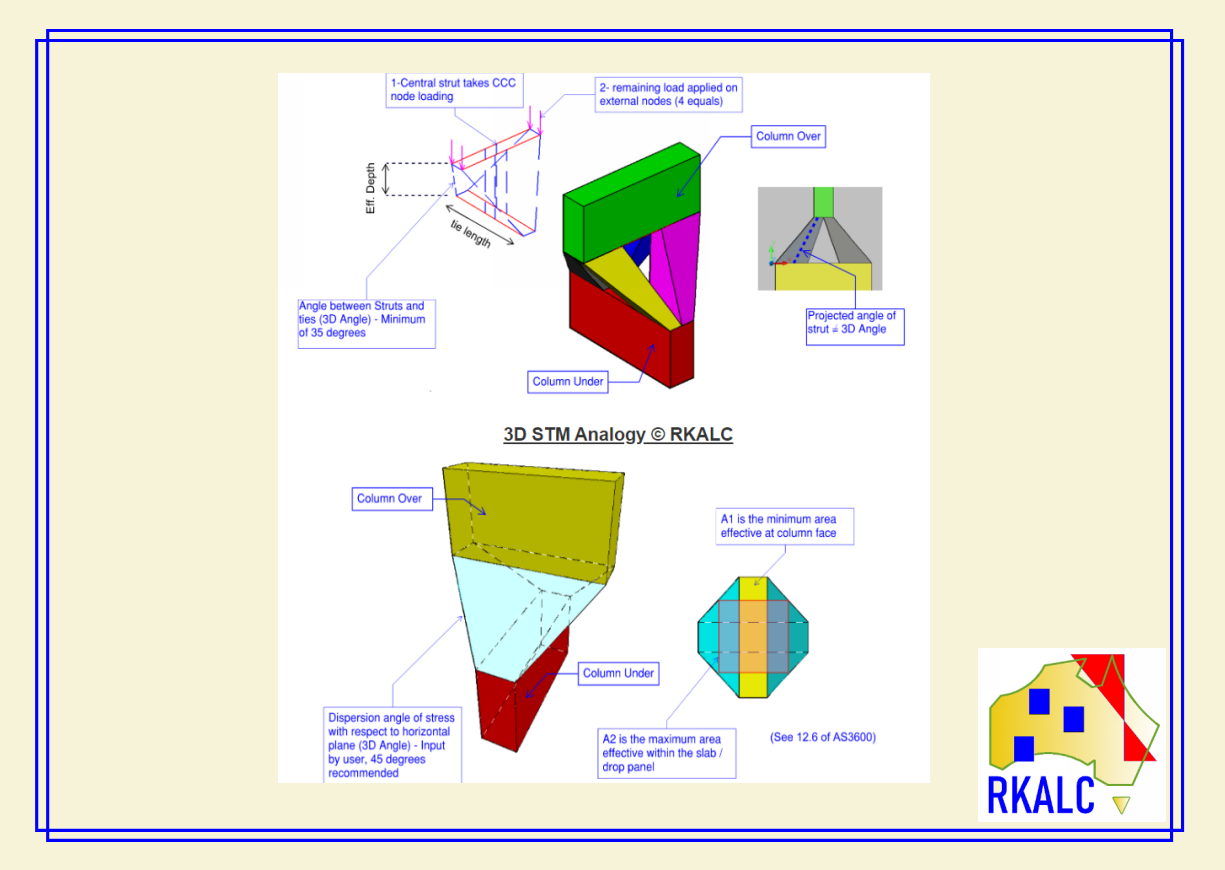
Corbel? Yes!!
A new unique App is out today : Introducing the Corbel calculator, to analyse and design corbels, properly using the gold-old Schlaich STM Model
